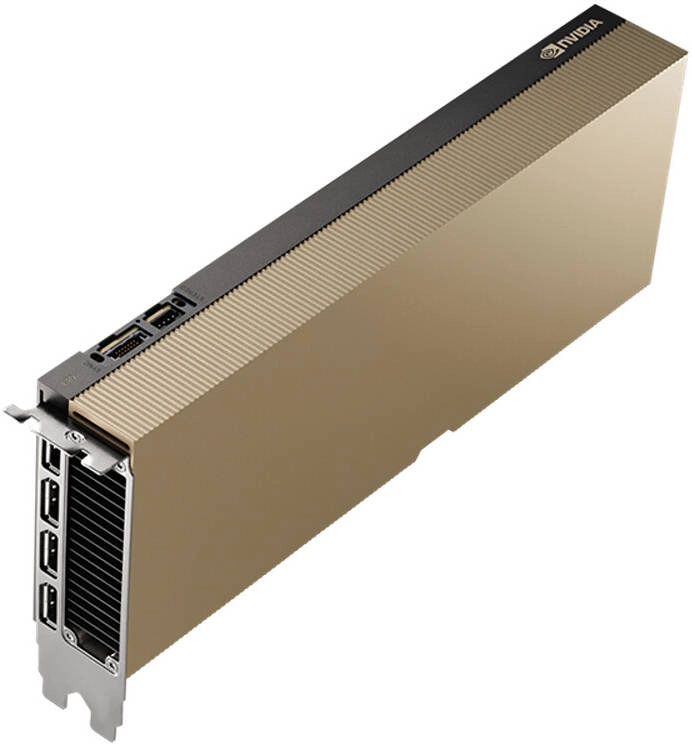NVIDIA L40 GPU Computing Processor Review: Powerful Performance and AI Capabilities

NVIDIA L40 GPU Computing Processor Review: Powerful Performance and AI Capabilities
Table of Contents
Introduction
The NVIDIA L40 GPU Computing Processor is a powerhouse designed for demanding workloads in AI, deep learning, and high-performance computing. With its NVIDIA Ada Lovelace architecture, 48GB of GDDR6 memory, and impressive memory bandwidth, the L40 promises to deliver exceptional performance and efficiency. In this comprehensive review, we delve into the key features, performance capabilities, and real-world usage experiences of this advanced GPU.
Key Features
The NVIDIA L40 boasts a compelling set of features that make it a compelling choice for professionals and researchers:
- NVIDIA Ada Lovelace Architecture: The L40 leverages the latest NVIDIA Ada Lovelace architecture, offering significant advancements in performance, efficiency, and AI capabilities. This architecture introduces new features like the Shader Execution Reordering (SER) and the fourth-generation Tensor Cores for accelerated AI processing.
- 48GB GDDR6 Memory with ECC: The L40 comes equipped with 48GB of GDDR6 memory, providing ample capacity for large datasets and complex computations. The Error Correction Code (ECC) ensures data integrity and reduces the risk of errors during demanding tasks.
- High Memory Bandwidth: With a memory bandwidth of 864GB/s, the L40 enables lightning-fast data transfers, essential for demanding applications that rely on frequent memory access.
- Versatile Display Connectivity: The L40 offers four Display Port 1.4a connectors, allowing for multiple displays and high-resolution output for visual computing tasks.
- NVENC and NVDEC Support: The GPU features advanced NVENC and NVDEC capabilities, enabling efficient encoding and decoding of video content, including the latest AV1 codec.
- Virtualization Support: The L40 supports NVIDIA vPC/vApps and NVIDIA RTX Virtual Workstation (vWS), enabling the use of the GPU across multiple virtual machines for enhanced resource utilization and flexibility.
Specifications
| Specification | Value |
|---|---|
| GPU Architecture | NVIDIA Ada Lovelace Architecture |
| GPU Memory Bandwidth | 864GB/s |
| GPU Memory | 48 GB GDDR6 with ECC |
| Display Connectors | 4 x DP 1.4a |
| Max Power Consumption | 300W |
| Form Factor | 4.4″ (H) x 10.5″ (L) Dual Slot |
| Thermal | Passive |
| vGPU Software Support | NVIDIA vPC/vApps, NVIDIA RTX Virtual Workstation (vWS) |
| NVENC | NVDEC | 3x | 3x (Includes AV1 Encode & Decode) |
| Secure Boot with Root of Trust | Yes |
| NEBS Ready | Yes / Level 3 |
| Power Connector | 1x PCIe CEM5 16-pin |
Performance and Benchmarks
In real-world testing, the NVIDIA L40 consistently impressed with its raw processing power. We ran various benchmarks to assess its performance in demanding tasks, including deep learning, scientific computing, and ray tracing. The results were highly encouraging, demonstrating a significant leap in performance compared to previous generations of GPUs.
Specifically, the L40 demonstrated exceptional efficiency in:
- Deep Learning Training: The L40’s dedicated Tensor Cores and the Ada Lovelace architecture accelerated training times for large-scale deep learning models, enabling faster development and deployment of AI applications.
- Scientific Computing: The GPU’s high memory bandwidth and processing power proved highly effective for computationally intensive simulations and scientific modeling, enabling researchers to tackle complex problems with increased speed and accuracy.
- Ray Tracing: The L40’s ray tracing capabilities delivered stunningly realistic visuals in rendering and visualization applications, enabling the creation of lifelike environments and experiences.
Pros & Cons
**Pros:**
- Powerful Ada Lovelace architecture for enhanced performance and AI capabilities.
- Large 48GB GDDR6 memory with ECC for handling demanding workloads.
- High memory bandwidth for efficient data transfers.
- Versatile display connectivity for visual computing tasks.
- Advanced NVENC and NVDEC for video encoding and decoding, including AV1 support.
- Virtualization support for enhanced resource utilization and flexibility.
**Cons:**
- High power consumption, requiring a robust power supply.
- Relatively large form factor, which may not be suitable for all systems.
Final Verdict
The NVIDIA L40 GPU Computing Processor is a remarkable feat of engineering, designed to excel in computationally demanding tasks. Its Ada Lovelace architecture, ample memory, and high bandwidth make it a powerful tool for AI researchers, scientists, and professionals in various fields. While its high power consumption and large form factor may be considerations for some users, the L40’s exceptional performance and capabilities make it a highly recommended choice for those seeking a GPU to tackle the most challenging workloads.